Create a Scoreboard for Your Business

Create a scoreboard for your business success! Many businesses use scoreboards to measure the success of their strategies and plans. They provide a convenient way for employees to understand what the company is doing, compare performance over time, and better understand where they fit into their organization.
Scoreboards can be tangible- they may involve some form of paper or digital tracking system on which financial statements, production numbers, deadlines, etc., are recorded- or intangible measures like an internal database that helps plan future priorities.
Creating a scoreboard for your business can be an excellent way to measure progress and set goals. The classic example of the Scoreboard is that of a sports team's statistics. Every game, win or lose, can be recorded by a team and kept in a permanent history.
Types of businesses that use scoreboards
A scorecard would enable the same thing for an individual athlete or coach. From this point of view, a scoreboard is a tool that helps record every aspect of an individual's development and performance against their peers while also generating inspiration to up one's game to another level. Scoreboards are used in many different types of businesses, but they are at their most useful in the following industries:
Sports
Scoreboard for a soccer team, golf game, tennis match. Each player is ranked and ranked against other players within the league. Each win or loss displays that player's performance and allows for more focused training methods. It also serves as a competitive chessboard among players and coaches so they can find weaknesses and fix them immediately.
Marketing
Scoreboard for a sales team, staff performance of producing advertising. The salesforce can be ranked against other sales teams according to the number of sales they make over time. The same can be done for products and advertising campaigns.
Management
Scoreboard for office staff, managers, and executives who are accountable for various aspects of their company's success. Whether this is in the production of products, management of employees, or what it takes to run a business effectively.
Entertainment
Scoreboard for a theater production, concert, or orchestra. It would be used for each performer and their performance against other artists or competitors. It serves as an excellent tool that highlights the two most important aspects of performance: how well they are playing with others and improving one's technique to the next level.
Benefits of creating a Scoreboard for Your Business
Creating a scoreboard allows you to focus on the aspects of your business that need the most attention. The benefits of creating a scoreboard for your business are endless. It's hard to think of a downside from identifying discrepancies at an early stage to increasing employee engagement and reducing stress - unless it doesn't seem like the right time.
The following are just a few of the benefits of creating a scoreboard:
Creates Clarity and Empowerment
Creating a scoreboard gives you instant clarity on what is working, what is not working, and how you can spread that winning formula to all areas of your business. It also helps create mutual accountability for each team member and gives them the power to take ownership of their tasks.
Increases Employee Engagement
Having one dashboard that tracks each employee's key performance indicators (KPIs) and goals will increase their engagement levels because they will feel like they have more control over their job. It also enables employees to identify inefficiencies within their work and identify where other employees may be struggling.
Reduces Stress
Having a centralized scoreboard that tracks your KPIs and critical tasks will reduce the number of stress employees feel throughout their workday. It is because they'll clearly understand what they need to focus on and where they stand with each task. If a task is not up to scratch, it's easy for them to identify what needs to be done. No more worrying about whether you're getting everything done or not!
Improves Customer Retention Rate
Creating a scoreboard for your business will enable you to track your customer retention rate and quickly find out which customers are most profitable for your business. You'll see where your customers are coming from, what their journey is like, and how to push them further down that journey. You'll also be able to analyze your customer's success across the business, considering each customer's basic details and level of satisfaction.
Helps with Teamwork and Collaboration
Giving a scorecard interface to each employee in your business creates more Teamwork and collaboration between team members. The Scoreboard helps each employee feel a part of the team, as they will be able to see the status of each member's tasks and identify how they can assist other members in achieving their goals. Without a scoreboard, this is not possible.
Easily Identifies Issues
Because you can measure each aspect of your business, it's easy to pinpoint where the problems lie and quickly resolve those issues. It's also easy to see what is working, which makes you want to continue doing it.
Helps Get Your Business Funded
If you're applying for any funding or investment through a bank or lending agency, they often require a scorecard. It is a great way to get your business funded because your business can be easily interpreted with numerical analysis and clear KPIs. You will have to explain the Scoreboard in detail to make sense for those unfamiliar with it.
Helps You Stay on Track
Having a scoreboard within your business lets, you stay on top of everything happening in your business. It also gives you the chance to try new strategies and quickly adapt them if they aren't working out. It could give you an edge over other businesses that don't have a scoreboard in place.
Makes Your Product Stand Out
Having a scorecard for your business allows you to build a unique brand and stand out from the crowd. When others are competing for the same budget, you'll be able to show that the way you're operating is precisely what they should do to succeed. It also gives you more control of your products because it helps you to identify whether there are any problems with your product that nobody else has noticed and how these can be resolved.
Validates Your System
The scorecard creates a complete picture of what's going on and provides data you can use later on as evidence when seeking funding or getting ahead in negotiations.
Track each employee's progress
Building a scoreboard can be an excellent means of tracking each employee's progress and helping them focus on improving their performance. It also serves as a way to get direct feedback from customers or clients. If customers have something to say about your performance, you probably must hear it right away. For your next business strategy, use a scoreboard to track progress and make sure you are closing the gap between goals and reality.
Makes Your Business More Competitive
Creating a scorecard within your business allows you to be more competitive. It's an effective way to communicate to your customers, team members, and vendors what you're trying to achieve and how they can help you get there. It is valuable information because it allows them to identify where they can give the most assistance and where they could inadvertently hinder your progress.
Helps You Identify the Information You Need
Creating scoreboard forces you to understand what each task is about, which helps you identify what information and data you need to collect for each aspect of your business.
How to Create a Scoreboard for Your Business?
If you're starting a new business, you need to create a scoreboard that helps keep track of your operations. While it might seem intimidating, it's quite simple.
First, you need to take inventory of all the costs associated with your business, from the computers you use to how much paint it costs when painting a wall. Next, write down everything you will sell and what each product is worth on a per-unit basis. You'll want to break this down into categories to know exactly where every item falls. In addition, list out all of your major expenses - like rent and utilities - and projections for how much money each category should be bringing in. It will show you where the problems are.
When setting up your Scoreboard, you need to figure out how much time you will devote to the business every week. Write down how many hours you will commit per week and then tally up how much money that should bring in every month.
Now, every week, take inventory of everything that occurred during that week and your expenses. You can then compare this to your weekly scorecard and see what went right and what went wrong. Over time, this will help you to know where you need to change things so that your business can run more smoothly.
If you're not sure how much your business should cost to run every week, then ask any friends or family members you trust. They might be able to let you know how much they think their business costs each week and give you an idea of where to start.
Remember, every small business owner needs to create a scoreboard that reflects the costs of operating a business. You don't want to be surprised by how much it costs to run your business, so you need to know exactly where the money is.
10 Scoreboard Tools to manage your business
The tools that are available to you will depend on your type of organization or business. For those wanting to manage their team and the day-to-day operations, several options are available in the market. However, for those who want to focus more on what is happening within their recorders, there are several choices too.
1. Salesforce
Salesforce is a smart option that many businesses opt for to help manage their business. Salesforce is an enterprise technology company that provides a suite of software applications for customer relationship management, sales force automation, and analytics.
2. Microsoft Office 365
Office 365 is Microsoft's subscription-based software suite, including the latest Office apps like Word, Excel, and PowerPoint. It is a good option if you already use Microsoft in the office. It uses the same interface, making transitioning from one to the other simpler.
3. Google Apps Business
Google Apps Business is another good choice if your company already relies heavily on Google tools and apps. However, you can use Gmail to get your day-to-day operations done for those who don't.
4. Trello
Trello is a popular tool that has been specially developed for teams. It offers tools like boards, lists, and cards to track different tasks and projects easily.
5. HubSpot
HubSpot is another excellent tool for managing your business effectively. It offers a range of tools meant for the different stages of your business' development and the various stages within these stages. These include tools like Inbound, Content Marketing, Social, and others.
6. Easy Projects
Easy Projects is a good option for those who like to mix between the old and new. It offers a more modern approach to managing your projects and tasks while also allowing you to access them from any device.
7. Asana
Have you tired of your team missing deadlines and being unorganized? Meet Asana, a productivity software that streamlines your workflow, so you stay on top of projects. After all, it doesn't matter how organized the tasks are in your head if you don't have a system for making sure everything gets done when it needs to be.
Asana lets you assign multiple people to one project and gives them their inbox where they can comment on your messages or upload files just as they would on an email thread.
8. Teamwork
Another of the newer players in the market, Teamwork, is a good option for small businesses that need a simple and effective way to get their work done.
9. Basecamp
Basecamp is another tool similar to Trello, with its features like boards, lists, and individual cards for each project or task. However, compared to Trello, Basecamp is a great tool for managing your team rather than your entire business.
10. Google Docs
Google Docs is an excellent option for managing your business. It allows you to create documents, spreadsheets, and presentations to effectively collaborate with your team, clients, and even competitors.
Conclusion
Creating a scoreboard within your business is a huge step forward in attaining more outstanding results. It's also one of the things that help to build your business and grow it, especially when you're looking for funding or looking for other businesses to compare yourself to.
Do you feel like you are struggling with putting "strategy" and "business growth concepts" in place that make a difference? Doing it all is overwhelming! Let’s have a honest discussion about your business and see if the Power of 10 can help you. Click “HERE” to have a great conversation with our team today.
Written and Published By The Strategic Advisor Board Team
C. 2017-2021 Strategic Advisor Board / M&C All Rights Reserved
www.strategicadvisorboard.com / info@strategicadvisorboard.com











